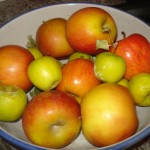Looking back on your school years, particularly in Social Studies classes, were you taught the history of the world? I mean, from beginning to present? If your studies were like mine, you were taught in chunks, jumping from the Rennaisance to American Colonization to Egyptian culture. I saw the pieces, but not the whole picture.
For this reason, I wanted to teach my children the history of the world at home.
I was recommended this book, A Child's History of the World, by V.M. Hillyer.
We are now half way through it, which means about half way through the history of the world!! My kids, ages 6 and 7 look forward to history time, and amazingly, even though during the school year we have limited time to read and learn, they remember many of the important parts.
When we go to the city, my daughters point out, "Look, Mom! Those are doric columns!" Because of our studies, my oldest daughter has developed a passionate curiousity about Egypt. It has also given me lots of opportunity to teach morals to my children, by looking at true stories of people in history, such as Alexander the Great, Constantine, Nebudchadnezzar, and others.
And I myself am finally able to string together those bits of history taught in school. I have a better understand of the names of persons I hear so much about, but have had a vague understanding of who they really were, or their impact on the world.
With that being said, I do want to point out the positive and negative aspects of this book.
Pros: This book is written like a story, and each chapter covers only one section of history at a time. The chapters themselves are only 5-7 pages long, and includes illustrations. It is easy to read and understand, and is conversation-like in nature.
Cons: First copywrited in 1924, the book itself is part of history, and because of this, one aspect of the book in particular has to be taken with a grain of salt. As was typical in that era, the book is clearly written with the idea of the heightened status of an Anglo-saxon, Christian man. If you can bite through that one and transform the wording and ideas to a more open view of the world, you can learn quite a bit.
Another book series that I have heard good things about is Susan Baur's The Story of the World: History for the Classical Child". I was told by more than one mother that this book may be more suitable for children ages 7-9. As it is written more recently, and by a woman, you are likely to not encounter the cons mentioned for the previous book. Reviews for her book praise the story-like reading of her books, and they come with audio CDs as well.
Attempting to engage the girls in the study, I add on one activity with each section. We study the history with a map, and thereby learn geography as well. We watch short videos on YouTube, put on a puppet show, or do an easy craft. Each lesson takes about 20 minutes. In all, I have found the learning of history to open the eyes of my children of how our civilization came to be, the great accomplishments (as well as great falls) of persons, and the relation of places in the world, all at a young age. Should you have other recommendations for teaching history to young children, please leave a comment below.




